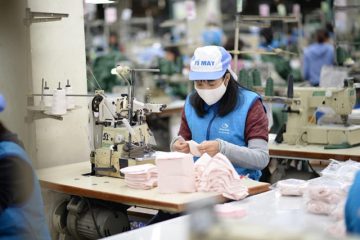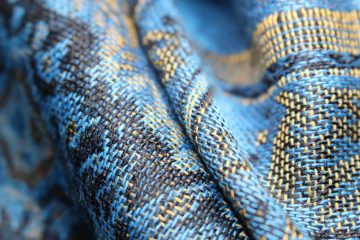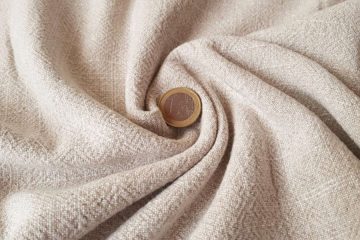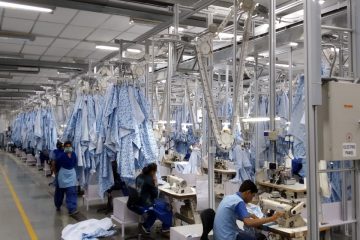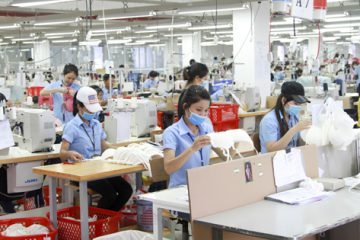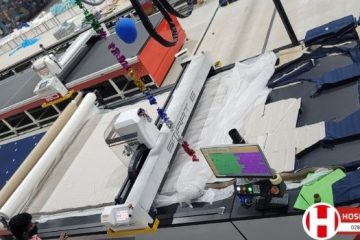What is denim fabric? All information about denim fabric
09/12/2021What is denim fabric? Where did this fabric come from, and why has its popularity endured unabated throughout the decades? We’ll dive into all these questions and more as we tell you everything you need to know about denim fabric.
I. What Is Denim?
Denim is a strong cotton fabric made using a twill weave, which creates a subtle diagonal ribbing pattern. The cotton twill fabric is warp-facing, meaning that the weft threads go under two or more warp threads, and the warp yarns are more prominent on the right side. The diagonal ribbing is what makes denim fabric different from canvas or cotton duck, which is also a sturdy woven cotton fabric.

What is denim fabric?
II. The History of Denim Fabric
Denim was first produced in the city of Nîmes in France, and was originally called the serge de Nîmes. The word denim is an English colloquialism of the French term: “de nim.”
Denim became popular in the United States during the Gold Rush in 1853, when Levi Strauss opened up a shop in San Francisco selling dry goods along with buttons, threads, and canvas for tents. He began making durable pants for miners with big pockets for storing gold. Jacob Davis was one of Strauss’s customers, and he added copper rivets to the seams and pocket corners, adding strength. David and Strauss patented the pants and Strauss began mass producing and marketing them, helping them evolve from something worn exclusively by working men to a mainstream fashion item.
III. How is denim fabric made?
There are a few stages that culminate in the production of finished denim fabric products:
- Cotton cultivation
The denim production process begins with the cultivation of the cotton plant. As a protective measure, this plant develops a thick ball of fibers around its small black seeds as it grows, and these fibers can be collected and separated from their seeds to make fabric.
- Processing into yarn
Cleaned cotton fibers are combed and made into long, thin strings. Then, they are spun into yarn using an industrial machine. Throughout this process, a variety of washes, dyes, or treatments may be applied that change the attributes of the finished denim product.
- Final production
Once cotton yarn is produced and dyed, it is woven into the iconic warp-faced denim style. This fabric is generally produced in bolts that can be purchased by the yard and shaped into finished consumer products.
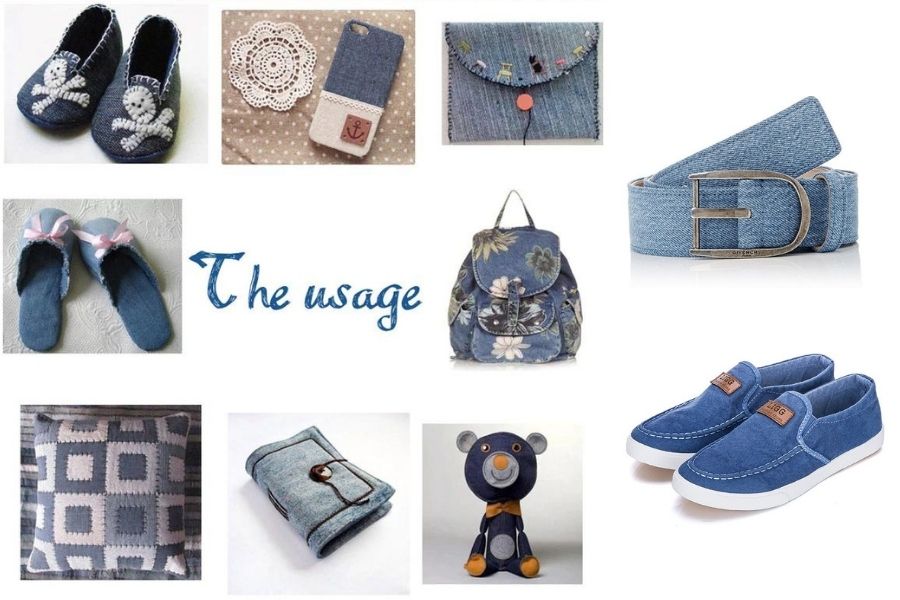
How is denim fabric used?
IV. How is denim fabric used?
- Apparel
The majority of denim fabric is used in apparel. Examples of denim apparel items include:
-
- Jeans
- Skirts
- Shirts
- Blouses
- Jackets
- Vests
- Accessories
Denim is also commonly used in accessories like:
-
- Shoes
- Belts
- Purses
- Hats
- Homewares
As denim has become a fashion icon as well as a practical fabric, this textile has found its way into the homewares market in the following categories:
-
- Drapes/curtains
- Upholstery
- Blankets/duvets
- Pillows
V. What different types of denim fabric are there?
Over the years, quite a few forms of denim have been developed. Here’s some information on a few of the most popular options:
1. Raw denim
This type of denim has not been washed or treated. Generally, it is worn for six months to a year without washing to make sure it forms to the wearer’s body. Raw denim enthusiasts often resort to putting their jeans in the freezer overnight to kill off microbes and bacteria.
2. Sanforized denim
Most types of denim have been sanforized, which is the washing process that has resulted in modern denim fabric. While sanforized jeans are softer, they are also less durable, and they aren’t as personalizable as raw denim jeans.

3. Stretch denim
With this type of denim, cotton has been mixed with spandex or a similar material. The resulting fabric is stretchier than normal denim, so it is commonly used in form-fitting applications like skinny jeans.
4. Crushed denim
This type of denim features a weave that’s similar to velvet. It has a permanently wrinkled appearance that makes it appealing for jackets and skirts.
5. Selvedge denim
Selvedge denim has a fringe at the end, and this fabric is commonly used to make jackets.
6. Acid wash denim
This type of denim features an iconic mottled appearance. It’s made by washing raw denim in a strong acid that eats away at the dye.
7. Poly denim
The term “poly denim” is widely used to refer to denim products that are made with a mix of cotton, polyester, and any number of other artificial fibers. Along with polyester, materials like lyocell and nylon are sometimes added to cotton to make denim products. Some purists would say that poly denim is not “real” denim.
Contact us for a consultation or to schedule a machine demo at our showroom:
-
Phone: (+84) 0983 309 910 (WhatsApp, WeChat, Zalo)
-
Email: marketing@hoshima-int.com
-
LinkedIn | Facebook | YouTube: Hoshima International

